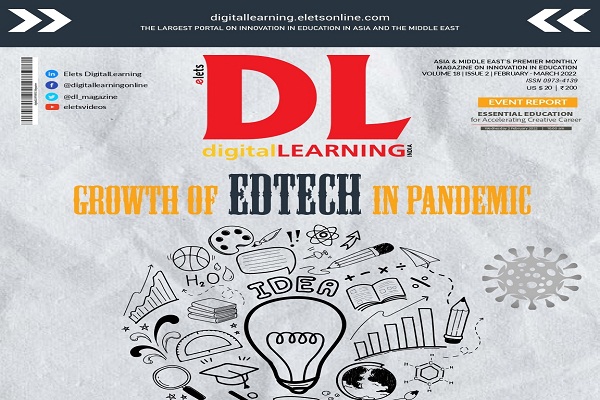 The DiploFoundation is a small non-profit rganization created by theGovernments of Malta and Switzerland, co-located in Malta and Geneva. It’s mission: ‘to assist all countries, particularly those with limited resources, to participate meaningfully in international relations. Diplo promotes a ultistakeholder approach, involving participation of international rganizations, civil society and other actors in international affairs. Diplo’s activities include education and training programs, research, and the development of nformation and communication technologies for diplomatic activities.’ (www.diplomacy.edu) Diplo’s flagship course is its one year Post Graduate Diploma or Masters of Art course in contemporary diplomacy and use of ICT. Diplo is accredited by the University of Malta, with EU-wide recognition. Limited to about 25 participants, the course draws young men and women from around the world: working diplomats, students of international affairs, those working in international organizations, NGOs and others. Diplo offers scholarships to participants from developing and transition countries, on the basis of funding from Swiss Aid, and support from entities such as the EU, the Commonwealth and other donors. In addition, Diplo runs an expanding number of short courses (usually of 10-week duration), and a series of programs covering Internet governance, plus diplomacy-related topics, aimed at single countries, special groups,as also general participants. A common feature is that these courses are either entirely run through the Internet, or are offered as blended programs to participants from Europe, with a strong distance learning component. Teaching methodology The Internet-teaching methodology used has evolved through experience, and consists of textbased learning, with very limited use of multimedia. A significant proportion of Diplo course users are based in Africa, Asia, Oceania, places where broadband is still an unrealized promise, and the dial-up connection, sometimes accessed by articipants relying upon Internet cafes is the simple reality. The underlying technical system and the support infrastructure have evolved over these years, through singularly dedicated work by Diplo’s visionary Director, Jovan Kurbalija, and his dozen-strong team, based in Malta, Geneva and Belgrade. I ined the teaching faculty of Diplo seven years back; that story is one of chance nd serendipity, best reserved for personal conversation! Let me, in this paper, first examine the relevance of e- learning for situations where ntensive acherstudent dialogue is imperative, then narrate the way we use elearning at iplo and describing another challenge of e-learning — the concept of the pure selflearning’ course, which some may regard as the holy grail of distance learning, and others may see as an unattainable goal. Why e-Learning? In ome circumstances, e-learning is more efficient and economical than raditional learning, or ‘tlearning’. <!–Ads1–> Foreign ministry mid-career training (when most personnels are on assignment abroad ) and other ‘continuing education’ rograms, for example, find a natural fit with the Internet. This method also proves less expensive for training locally the locally-engaged staff working in embassies abroad. Another characteristic of diplomatic work is that much of it involves craft skills. When the course participants are people with many years f experience, the ‘training’ is actually a mutual learning process among the lass, where the faculty function as discussion catalysts and facilitators, and ven have much to learn from the course participants. The Diplo method Diplo as evolved its methods over several years; described below is the current echnique, in a process that changes continually.<!–Ads3–> How does our faculty-led teaching work, with a class size of 15 to 25 drawn from 10 or more countries, distributed around the world? A typical module consists of eight lectures and wo assignments, besides a final exam. Under universitymonitored standards, uch a module typically counts for four units of postgraduate training. Diplo uses sophisticated text-based methods because many of its ‘class participants’, s Diplo prefers to describe those enrolled in its programs — do ot have access to broadband or multimedia modes. After reading the lecture osted on the class web-page (usually of 3,000 to 4000 words), the participants highlights some words or part of a sentence from the lecture text nd adds his or her comment on it and the faculty add his observations. The lecture thus gets thoroughly reviewed by the class. One can also view all the comments in their totality (without opening each text-box), through a ‘discussion tree’. The participants can also engage in a open-ended dialogue, or synchronous (i.e., not in real time) exchanges, among the class and its nstructor through a ‘lecture blog’. A part of the participant’s final evaluation is based on the number and quality of comment. All the comments are ublic, visible to the entire class, but an option for private teacherparticipant mment hrough e-mails is also available. Real-time online debate on points arising from a particular lecture is incorporated in the e-learning process as the third major ctivity for each lecture. Thus each generation of course members and lecturers create a new layer of meaning and examples, enriching the initial text. Unlike comments made in a traditional class, all the ecomments are accessible anytime, anywhere, and produce a ermanent record as well. A ‘resources’ button on the home page of the e-learning lecture site, takes one to a ollection texts of relevant documents as well as links o other relevant web sites. Finally, at the end of a 7-day cycle, the teacher ‘closes the loop’ by summarizing the key issues that the class discussed, and suggests some themes hat participants may wish to pursue on their own. The iploFoundation’s experience shows that the process create a sense of community within this far-flung class which is further augmented with group work among class members, such as assignments and simulated egotiations. Such chemistry among the participants is the key o this entire process, more so when learning is no longer a top-down process of dissemination of basic knowledge by the faculty to students, but rather mutual dialogue and shared learning . E-learning has to be supported by a technical team that continually monitors the systems. A course director provides an extra pair of eyes for observing clas nteractions, acting as the participant’s ally to resolve technical and other issues. The self-learning format In some ways self-learning represents the ‘last mile’ of distance learning, where the essence of a single lecture is distilled to some 9 or 10 ‘frames’ or slides that a participant can scroll through, at his or her convenience, with built-in questions and pop-up quizzes that test the learning accomplished. At the extreme end of self-learning, there may be no faculty participation at all, though it is quite easy to build in some faculty supervision, depending on the circumstance. came upon this method through the Canadian Foreign Service Institute, Ottawa, who asked me in 2004 to convert a textbook I had written two years earlier into such a self-learning course of 6 lectures. We found that a course of 6 lectures could involve around 150hours of work in developing the formatted script, and an additional 700 to 800 hours to convert that into a full multimedia product, making the process fairly laborintensive.That particular course took one year’s work. How does e-Learning measure up? One may legitimately ask, is it really possible to overcome distance, replicating the instant, natural communication of the traditional format? Can online learning match the rapport that a good teacher establishes with students and ce-to-face evaluation? Surely no videoconference or online chat room can reproduce the way a good guru assesses at a glance the class’s absorption of the ideas taught.
The DiploFoundation is a small non-profit rganization created by theGovernments of Malta and Switzerland, co-located in Malta and Geneva. It’s mission: ‘to assist all countries, particularly those with limited resources, to participate meaningfully in international relations. Diplo promotes a ultistakeholder approach, involving participation of international rganizations, civil society and other actors in international affairs. Diplo’s activities include education and training programs, research, and the development of nformation and communication technologies for diplomatic activities.’ (www.diplomacy.edu) Diplo’s flagship course is its one year Post Graduate Diploma or Masters of Art course in contemporary diplomacy and use of ICT. Diplo is accredited by the University of Malta, with EU-wide recognition. Limited to about 25 participants, the course draws young men and women from around the world: working diplomats, students of international affairs, those working in international organizations, NGOs and others. Diplo offers scholarships to participants from developing and transition countries, on the basis of funding from Swiss Aid, and support from entities such as the EU, the Commonwealth and other donors. In addition, Diplo runs an expanding number of short courses (usually of 10-week duration), and a series of programs covering Internet governance, plus diplomacy-related topics, aimed at single countries, special groups,as also general participants. A common feature is that these courses are either entirely run through the Internet, or are offered as blended programs to participants from Europe, with a strong distance learning component. Teaching methodology The Internet-teaching methodology used has evolved through experience, and consists of textbased learning, with very limited use of multimedia. A significant proportion of Diplo course users are based in Africa, Asia, Oceania, places where broadband is still an unrealized promise, and the dial-up connection, sometimes accessed by articipants relying upon Internet cafes is the simple reality. The underlying technical system and the support infrastructure have evolved over these years, through singularly dedicated work by Diplo’s visionary Director, Jovan Kurbalija, and his dozen-strong team, based in Malta, Geneva and Belgrade. I ined the teaching faculty of Diplo seven years back; that story is one of chance nd serendipity, best reserved for personal conversation! Let me, in this paper, first examine the relevance of e- learning for situations where ntensive acherstudent dialogue is imperative, then narrate the way we use elearning at iplo and describing another challenge of e-learning — the concept of the pure selflearning’ course, which some may regard as the holy grail of distance learning, and others may see as an unattainable goal. Why e-Learning? In ome circumstances, e-learning is more efficient and economical than raditional learning, or ‘tlearning’. <!–Ads1–> Foreign ministry mid-career training (when most personnels are on assignment abroad ) and other ‘continuing education’ rograms, for example, find a natural fit with the Internet. This method also proves less expensive for training locally the locally-engaged staff working in embassies abroad. Another characteristic of diplomatic work is that much of it involves craft skills. When the course participants are people with many years f experience, the ‘training’ is actually a mutual learning process among the lass, where the faculty function as discussion catalysts and facilitators, and ven have much to learn from the course participants. The Diplo method Diplo as evolved its methods over several years; described below is the current echnique, in a process that changes continually.<!–Ads3–> How does our faculty-led teaching work, with a class size of 15 to 25 drawn from 10 or more countries, distributed around the world? A typical module consists of eight lectures and wo assignments, besides a final exam. Under universitymonitored standards, uch a module typically counts for four units of postgraduate training. Diplo uses sophisticated text-based methods because many of its ‘class participants’, s Diplo prefers to describe those enrolled in its programs — do ot have access to broadband or multimedia modes. After reading the lecture osted on the class web-page (usually of 3,000 to 4000 words), the participants highlights some words or part of a sentence from the lecture text nd adds his or her comment on it and the faculty add his observations. The lecture thus gets thoroughly reviewed by the class. One can also view all the comments in their totality (without opening each text-box), through a ‘discussion tree’. The participants can also engage in a open-ended dialogue, or synchronous (i.e., not in real time) exchanges, among the class and its nstructor through a ‘lecture blog’. A part of the participant’s final evaluation is based on the number and quality of comment. All the comments are ublic, visible to the entire class, but an option for private teacherparticipant mment hrough e-mails is also available. Real-time online debate on points arising from a particular lecture is incorporated in the e-learning process as the third major ctivity for each lecture. Thus each generation of course members and lecturers create a new layer of meaning and examples, enriching the initial text. Unlike comments made in a traditional class, all the ecomments are accessible anytime, anywhere, and produce a ermanent record as well. A ‘resources’ button on the home page of the e-learning lecture site, takes one to a ollection texts of relevant documents as well as links o other relevant web sites. Finally, at the end of a 7-day cycle, the teacher ‘closes the loop’ by summarizing the key issues that the class discussed, and suggests some themes hat participants may wish to pursue on their own. The iploFoundation’s experience shows that the process create a sense of community within this far-flung class which is further augmented with group work among class members, such as assignments and simulated egotiations. Such chemistry among the participants is the key o this entire process, more so when learning is no longer a top-down process of dissemination of basic knowledge by the faculty to students, but rather mutual dialogue and shared learning . E-learning has to be supported by a technical team that continually monitors the systems. A course director provides an extra pair of eyes for observing clas nteractions, acting as the participant’s ally to resolve technical and other issues. The self-learning format In some ways self-learning represents the ‘last mile’ of distance learning, where the essence of a single lecture is distilled to some 9 or 10 ‘frames’ or slides that a participant can scroll through, at his or her convenience, with built-in questions and pop-up quizzes that test the learning accomplished. At the extreme end of self-learning, there may be no faculty participation at all, though it is quite easy to build in some faculty supervision, depending on the circumstance. came upon this method through the Canadian Foreign Service Institute, Ottawa, who asked me in 2004 to convert a textbook I had written two years earlier into such a self-learning course of 6 lectures. We found that a course of 6 lectures could involve around 150hours of work in developing the formatted script, and an additional 700 to 800 hours to convert that into a full multimedia product, making the process fairly laborintensive.That particular course took one year’s work. How does e-Learning measure up? One may legitimately ask, is it really possible to overcome distance, replicating the instant, natural communication of the traditional format? Can online learning match the rapport that a good teacher establishes with students and ce-to-face evaluation? Surely no videoconference or online chat room can reproduce the way a good guru assesses at a glance the class’s absorption of the ideas taught.
At first sight, such e-learning programs miss out on the rich interactivity described above. But in practice, once a self-paced program is designed, it is easy to add on faculty intervention, either in the form of exercises whose results go to a faculty member or via periodic group exercises or simulations that break the apparent isolation of the self-taught format. There is only one caveat: the faculty add-on is possible only with server- based programs, not those distributed on CD-Roms. As for the faculty-led e-learning programs, like those offered by Diplo, a surprising conclusion is that in some ways the new format is superior to the old one. Unlike traditional classrooms where the tutor is able to reply to only a few queries within a stipulated period of time, e-learning classrooms supports a sustained facultyparticipant engagement as evident form the intensive scrutiny that each lecture undergoes.
A huge advantage is that lecture comments remain available for subsequent reference or reflection. Moreover, teachers invest on average 12 to 15 hours per lecture, much more than a traditional teacher takes to prepare and deliver the face-to-face lecture. Most of our participants also find that they end up spending more than the average of six to eight hours of class work that our courses promise. This may be partly due to the keen involvement that such courses arouse among all. Some e-learning systems also opt for more asynchronous activities, including group exercises such as class assignments and use video links or other multimedia facilities, depending on whether a diplomatic service can provide broadband connectivity to all its missions abroad. <!–Ads2–> What about a downside? One can visualize a few potential problems with e-learning. First, if the class fails to establish internal rapport, the entire process becomes very mechanical. Second, it is possible that if many ndividuals from a single organization take part, and if in addition the faculty is also drawn from the same organization, here could be some inhibition among the class in setting out their honest views, especially in written format. Third, if the e-learning class is told that their class performance will be used for major internal evaluations, such as promotions, one can easily encounter breakdown or reluctant participation. The moral: treat the new medium with caution, and do not overload it with an excess of frills or expectations; treat the first experiences as experimental, learn as you go along! In sum, the e-learning format is a fascinating addition to the repertoire of professional education. It is a work-in-progress, with each course that is run, offering new insights for better application of the format. ?






















